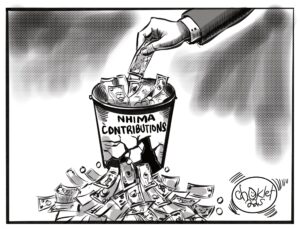Building on the previous analysis of the causes and impacts of illegal artisanal and small-scale mining (ASM) in Zambia, this article delves into the crucial measures being undertaken to address this crisis. While the problem is complex and deeply rooted, the Zambian government has recognized the urgent need for decisive action and is implementing a range of strategic interventions.
Reforming the Sector from Informality to Formalization
A critical first step in addressing illegal mining is to stop treating it as a mere “informal sector.” This designation can inadvertently downplay the seriousness of its environmental, social, and economic consequences. By reframing the issue as a significant legal and developmental challenge, the government is better positioned to implement effective solutions.
One of the cornerstone reforms is the formalization of the sector with a key initiative encouraging illegal miners to form cooperatives. Through active community engagement, the goal is to bring these miners into the regulatory framework, providing them with legal status and a pathway to responsible mining practices. This process, which is currently ongoing, is a crucial step toward ensuring that miners can operate legally and safely.
Addressing Key Hurdles of Finance and Market Access
A major reason many miners operate illegally is the lack of access to both funding and a fair market for their products. To combat this, the government is establishing a special Artisanal and Small-Scale Mining fund. This fund aims to provide much-needed capital to legitimate miners, enabling them to invest in safer equipment and sustainable technologies.
Beyond government initiatives, partnerships with established mining houses also emerge as a viable solution. For instance, companies like First Quantum Minerals (FQM) have shown a willingness to finance ASM operations in exchange for a share of the production. This model creates a symbiotic relationship, where large companies benefit from a consistent supply of minerals, and small-scale miners gain financial backing to operate legally and efficiently.
For gold, a mineral particularly susceptible to illicit trade, the establishment of gold refineries and trading centers is a game-changer. These centres will create an open and transparent market for ASM miners, ensuring they receive fair value for their product and reducing their reliance on foreign black-market buyers. This initiative directly tackles the illicit financial flows that plague the sector.
Strengthening the Regulatory and Institutional Framework
Effective supervision and administration are the bedrock of a functioning mining sector. The introduction of the Mines and Minerals Regulations Commission is a significant institutional reform aimed at improving oversight and mineral rights administration. This body has the potential to professionalize the sector, ensuring that all players, from large corporations to small-scale miners, adhere to the law.
However, the success of this commission hinges on strengthening the supervisory role of Regional Mining bureaus in various districts. These bureaus are the front line of enforcement, and they must be adequately resourced with both personnel and budget. The expected increase in revenue collection from a formalized sector provides a strong economic justification for these investments, creating a virtuous cycle where better oversight leads to higher tax collection, which in turn funds more robust supervision.
Addressing the Role of Traditional Leadership
The widespread nature of illegal mining, often occurring within traditional chiefdoms, highlights the critical role of traditional leaders. Many illegal miners claim they were given permission by chiefs to mine, creating confusion and undermining the national legal framework. It is crucial to clarify that while chiefs’ consent may be an important part of community engagement, it does not constitute the legal right to mine.
There is an urgent need for clearer communication and collaboration between the government and traditional authorities. By educating chiefs on their role and the legal process for mineral rights, the government can empower them to be partners in combating illegal mining rather than unwitting facilitators. This collaboration can help enforce national laws at the local level and prevent the proliferation of unauthorized mining activities.
A Path to Sustainable Development
In conclusion, the Zambian government’s efforts to formalize the ASM sector are a vital response to a complex crisis. By focusing on cooperatives, dedicated funding, transparent markets, and stronger institutional oversight, the government is taking decisive steps to unlock the sector’s potential while mitigating its negative impacts. The success of these reforms hinges on adequate budgetary allocation and a clear understanding of legal processes, ensuring that the artisanal and small-scale mining sector can truly become a force for sustainable social and economic development.
About the Author
Dr. Stephens M Kambani is a Research Associate at CTPD, Lecturer, and Researcher at the University of Zambia, Department of Mining Engineering with a PhD in Mineral Economics from Montana University, Austria and a Master of Engineering specializing in Mineral Economics from McGill University in Canada.
























